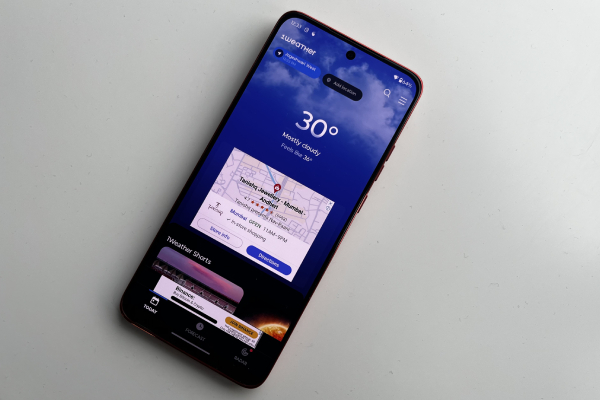
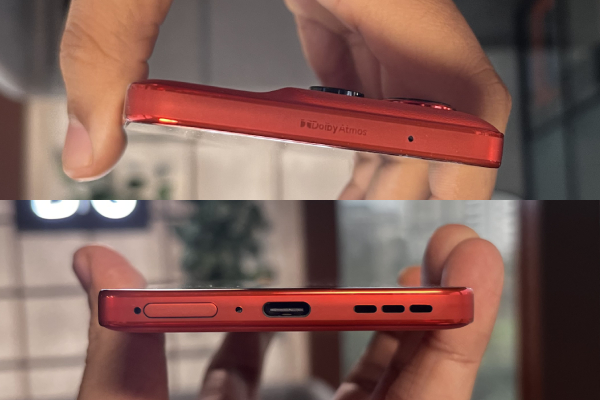
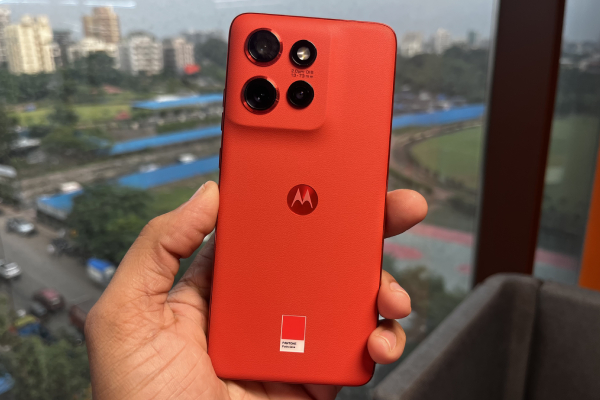
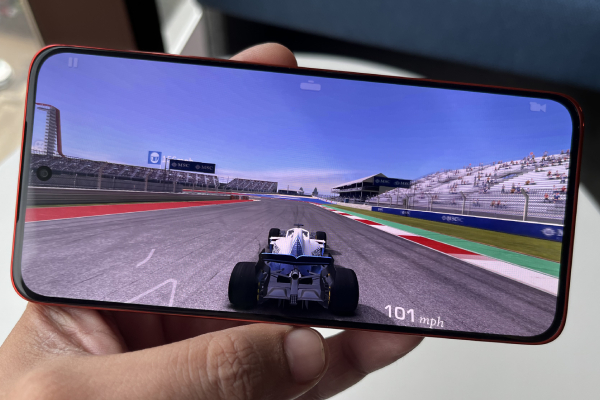
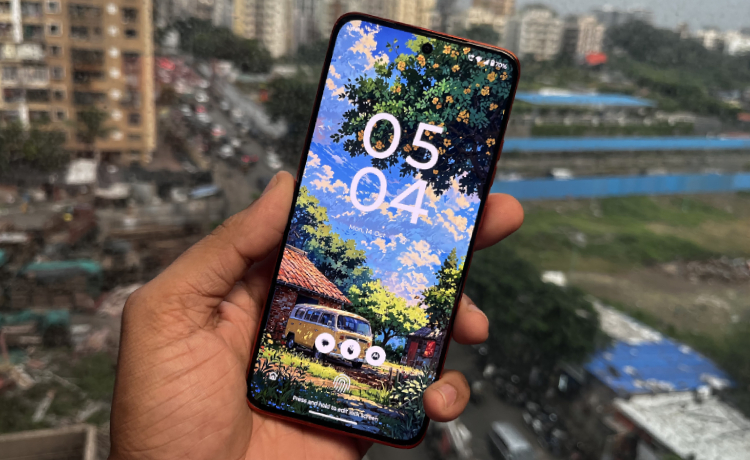
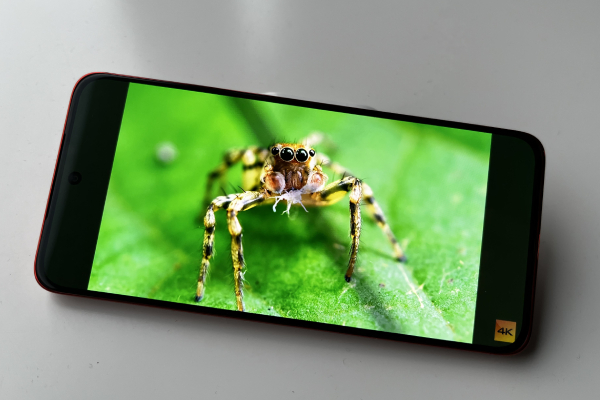
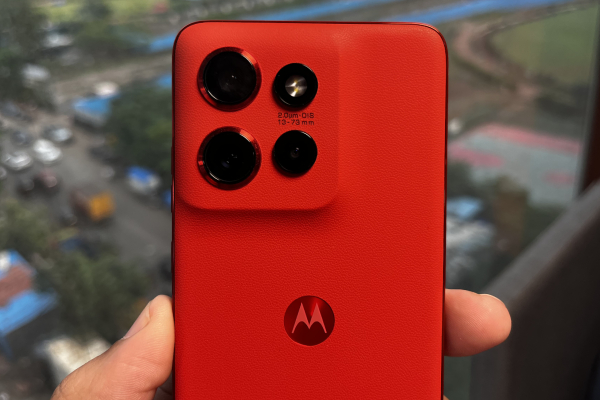
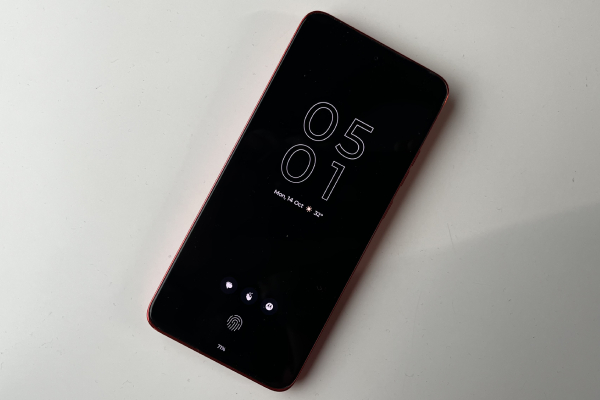
Over All Rating 4/5
Price Starts From ₹ 23,999
PROS 👍
- Small form factor
- Great display
- Admirable performance
CONS 👎
- Laggy camera app
- So-so battery life
Motorola is already challenging its mid-range competitors with four Edge smartphones and now, it has gone ahead and launched one more in the form of the Motorola Edge 50 Neo. And it has plenty of similarities to those devices, which does mean that one could be eating up the sales of the other. But I don’t think Motorola would mind that, especially in the mid-range market where it’s so difficult to stand out amidst competition. The Edge 50 Neo should immediately grab the interest of those who love compact phones. While the other handsets in the Edge range are offering 6.7-inch panels, this one has adopted a 6.4-inch one leading to a significant decrease in its footprint. How does that affect other aspects of its user experience? Let’s find out.
Motorola Edge 50 Neo Review: The Perfect Device For Compact Phone Lovers?
Design and Display

The back of the Motorola Edge 50 Neo is an absolute looker. The triple camera layout that’s balanced out by a flash module creates an attractive appearance. And then there’s Motorola’s much-adored vegan leather back that adds to the premium-ness and leads to a creamy touch. Although, I will say that the sticker at the bottom, which proclaims the Pantone branding, looks really out of place and spoils the overall look of the rear surface. The colour we reviewed is called Pantone Poinciana, and it did give out a really flashy vibe, but for those who want subdued colours, there are three other options available as well. The phone’s flat side surfaces transition sharply into a flat front surface. This makes for a good grip and contributes in a big way to an excellent grip.

As is the case with other Motorola handsets, the power button and volume rocker are both placed on the right-hand side, which makes the latter a bit hard to reach during one-handed use. On the bottom is a SIM tray, a Type-C port, a microphone, and a speaker grille, while the top is occupied by a Dolby Atmos branding and a microphone. The front surface has done a decent job of keeping the bezels at a minimum. I was particularly impressed by how thin the phone’s chin is. The front is even home to a punch-hole camera and an under-display fingerprint reader. Speaking of the fingerprint reader, its placement at the very bottom does need some getting used to.

As I said, the display is a big factor that distinguishes the Morotola Edge 50 Neo from the other Edge handsets. It allows the phone to have a footprint of just 154.1 x 71.2 x 8.1mm. That’s not a size that can be compared to smaller devices like the iPhone 13 Mini, but it’s definitely a good choice for those who love such handsets but don’t want to compromise much on the display size. The panel is a 120Hz LTPO one, which allows it to switch refresh rates on the fly. The peak brightness of 2800 nits allows this AMOLED panel to produce remarkable HDR visuals. Combined with 1,256 x 2,760 pixels of resolution, this makes viewing HDR content a rather pleasing experience.
Performance and battery life

The choice of the Mediatek Dimensity 7300 chipset isn’t a surprising one given the price of this handset. The 4nm processor creates an outstanding environment for your daily use. It makes sure that the apps load and close smoothly, the phone unlocks in a jiffy, and the games – no matter how heavy – run with finesse. My sessions on BGMI and Real Racing 3 were a delightful experience, thanks to the absence of any lag or shuttering issues. Unfortunately, the same cannot be said about camera usage. Clicking pictures and capturing videos is almost always a mildly infuriating experience, given how laggy the Camera app is. It sometimes takes at least 2 seconds to open and around the same amount of time to switch to a new focal length. This is certainly not a dealbreaker, but it’s an issue that can’t be ignored either.
Speaking of benchmark scores, on Geekbench, the device scored 1,049 on the single core test, and 3,022 on the multi core one. Competing devices like the OnePlus Nord CE 4 5G and the Honor 200 5G, which adopt the Snapdragon 7 Gen 3 chip have slightly better results though.
The smaller size of the Motorola Edge 50 Neo does bring concerns about its battery life. The reduction in size means that only a 4,310mAh unit has space inside the unibody design. It looks like thorough battery optimisations have been put in place to make up for this loss. However, it also looks like the choppy nature of the Camera app may be the result of these optimisations. Anyway, on a normal day’s usage, which involved around 1.5 hours of total Reel-scrolling, half an hour of gaming, and the daily mix of WhatsApp, Gmail and other apps, the Motorola Edge 50 Neo held up, but barely. It had only about 15 percent juice left in it during bedtime. Don’t expect two-day usage from it all, but if you’re a modest user, you can definitely extract one day’s worth of juice from it.
Camera

I’ve already mentioned my displeasure with the Camera app on this phone, so let’s move ahead and talk about the performance its cameras. The main draw here is that you get a total of five focal lengths. The 50MP main camera allows 1x and 2x shots with an f/1.8 aperture, while the 10MP telephoto snapper gives 3x optical zoom capabilities at f/2.0. And then there’s a 13MP f/2.2 shooter that makes ultra-wide and macro shots possible. No prizes for guessing that the main camera is the most impressive among the lot. The best way to describe it is that it’s adept. It captures your daytime shots in the most satisfactory manner. But the moment you start expecting more from it, it disappoints. In low light, despite the wide f/1.8 aperture, it can’t keep noise levels at bay. And you’ll notice a considerable amount of smoothening as well. Also, the white balance of the photos shot via the main lens tends to be on the warmer side compared to the ones shot using the telephoto and ultra-wide lenses.
The 3x zoom is a good feature to have but again, don’t expect breathtaking shots from it when the light gets dim. And the low resolution of 10MP means zooming in on these photos post-capture easily shows the weakness of the sensor. This lens also enables a portrait mode that renders four focal lengths. It’s a standout feature of this camera, as these portraits are brilliantly rendered with the perfect amount of bokeh. It’s a great tool to have for those who like to capture a lot of portraits of their partners. And even if they love to capture their own portraits, the 32MP selfie camera is an awesome tool to have. It’s great at separating the background and lets you control the amount of bokeh you want. Selfies captured from this 32MP camera are sharp and highly detailed. Lastly, the Motorola Edge 50 Neo enables 4K video recordings that feature rich colours and admirable dynamic range.
Software

The thing about non-premium phones these days is that you have to expect that they will have bloatware and a healthy amount of spammy notifications. This stands true for the Edge 50 Neo as well but the thing about this smartphone is that most of it can be kept at bay with a little tweaking. Take the spammy 1Weather app, for instance, which keeps finding a reason to bombard you with notifications. And most of its weather feed itself is filled with ads. So it’s best that you turn its notifications off or disable it completely. Most of the apps from the Motorola suite can’t be uninstalled, but at least they don’t bother you with many notifications. That said, the overall user interface is top-notch, with the right amount of customisation and useful features. I was particularly impressed by the way the phone displays notifications on the always-on display. Tiny icons appear on the bottom of the screen, just one tap on which gives you a glimpse of that notification, letting you decide whether to unlock the phone or not.
Verdict

The Motorola Edge 50 Neo offers an appealing mix of design, display, and performance, particularly for those who appreciate compact phones. Its premium vegan leather back and solid build are standout features, while the 6.4-inch 120Hz AMOLED display ensures excellent visuals with HDR content. Powered by the Mediatek Dimensity 7300 chipset, the phone performs smoothly in daily tasks and gaming. However, its camera app is laggy, and the overall camera performance, while adequate in good light, struggles in low-light scenarios. Battery life is just enough for moderate users, and while the software experience is mostly clean, the presence of bloatware and occasional spammy notifications detract from the otherwise polished interface. Overall, it’s a solid mid-range option with some caveats, but it should appeal to those looking for a compact, well-rounded device with premium touches.
Specification
| Display: | 6.4-inch AMOLED |
| Camera: | 50MP primary, 10MP telephoto, 13MP ultra-wide |
| RAM: | 8GB |
| Processor: | Mediatek Dimensity 7300 |
| Battery: | 4,310mAh |
| OS: | Android 14 |


